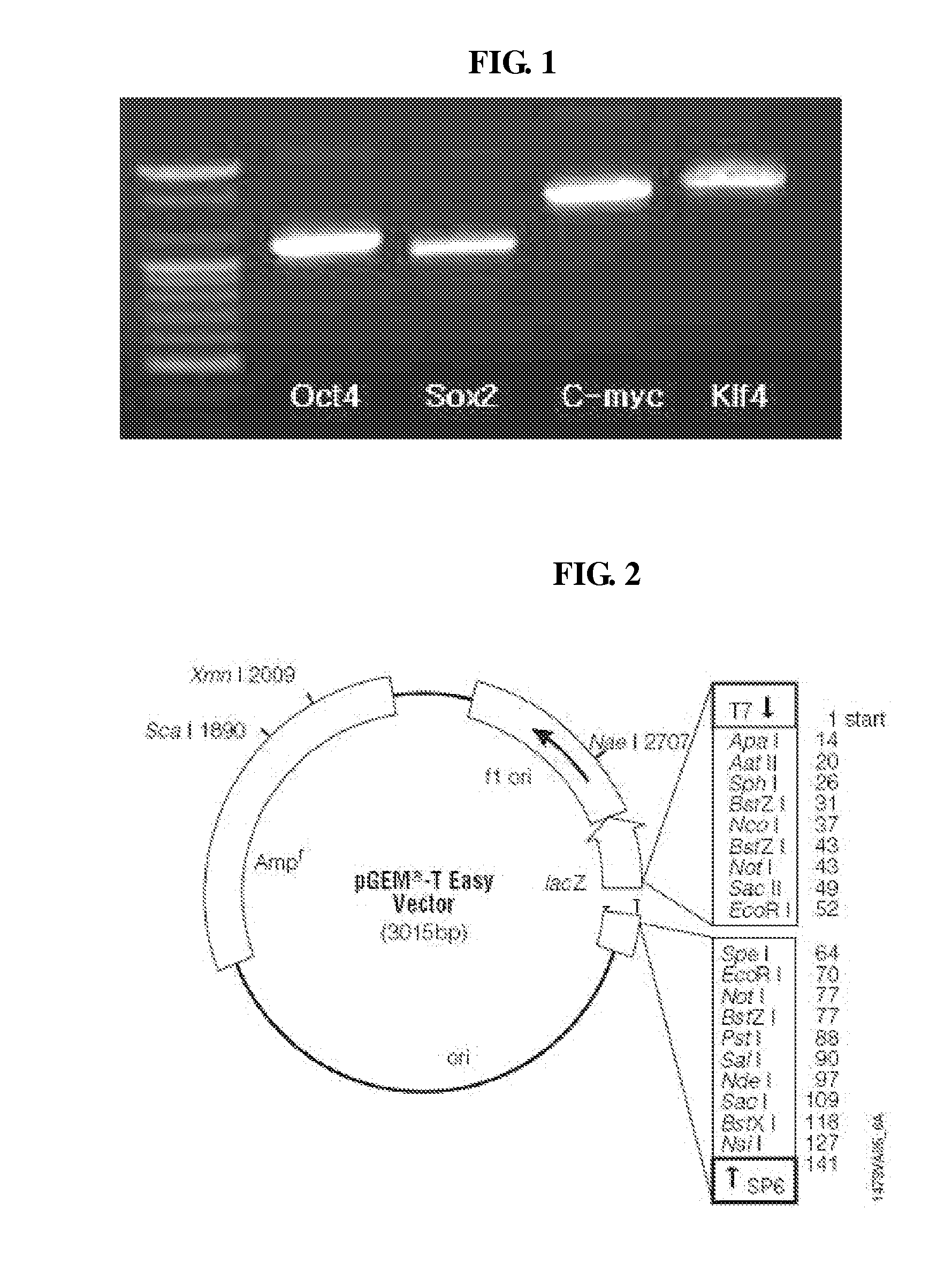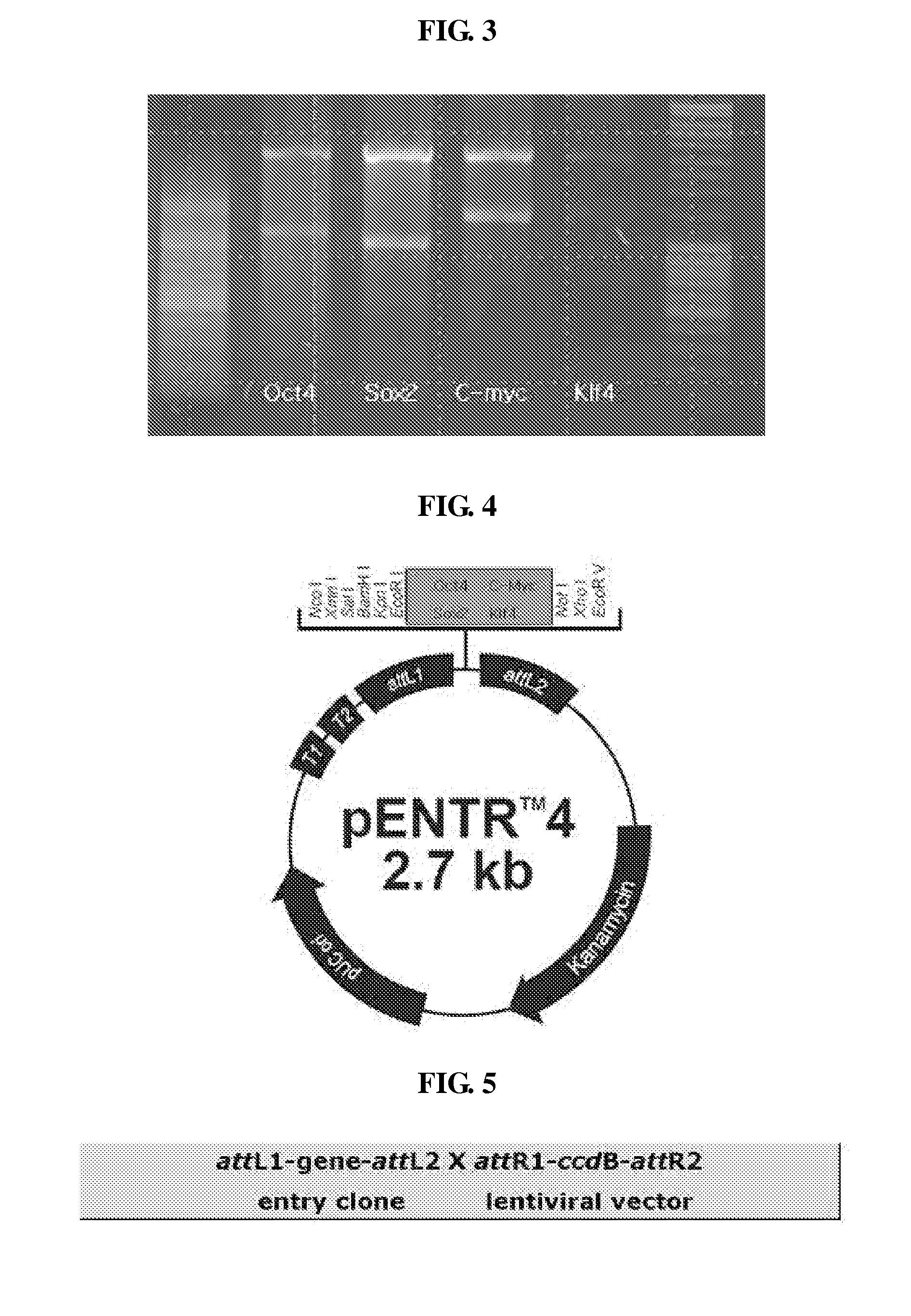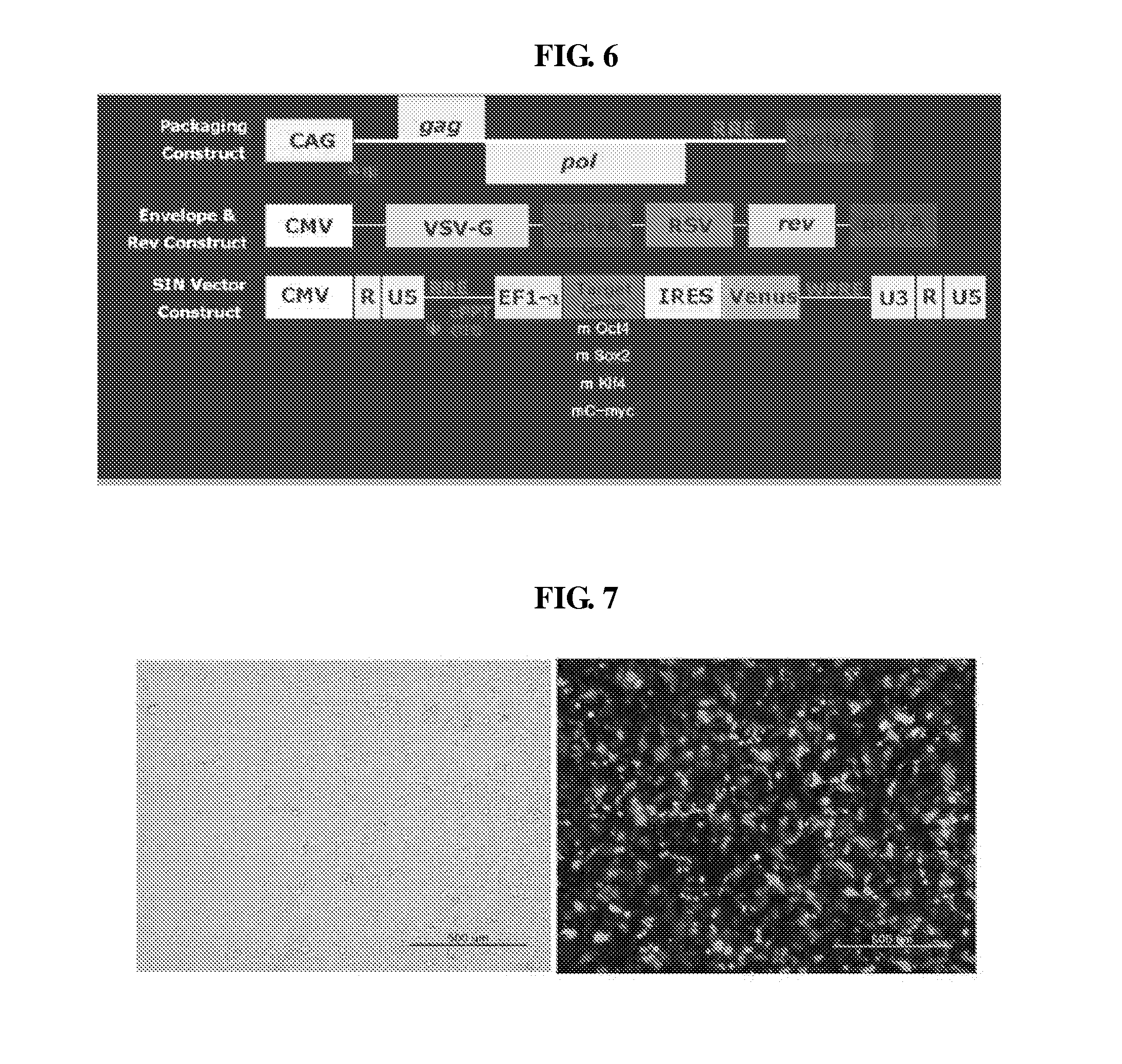Method of Manufacturing Induced Pluripotent Stem Cell Originated from Somatic Cell
- Summary
- Abstract
- Description
- Claims
- Application Information
AI Technical Summary
Benefits of technology
Problems solved by technology
Method used
Image
Examples
example
1. Preparation of T-Vector in which Oct4, Sox2, C-myc and Klf4 Genes are Induced
[0058](1) Total RNA Extraction from Mouse Embryonic Stem Cells
[0059]1 ml of a trizol reagent (manufactured by Sigma) was inserted in recovered embryonic stem cells and retained as was for five minutes at room temperature to destruct the cells, thereby eluting contents of the cells. Next, 200 μl of chloroform was inserted, mixed together in an inverted state, retained as was for about 15 minutes at a room temperature, and then centrifuged under a condition of 1,300 rpm, 15 minutes, and 4° C., thereby collecting only a supernatant except for precipitation, that is, solid of DNA and protein. Next, 500 μl of isopropanol was inserted in the obtained mixture, retained at a room temperature for about 10 minutes, centrifuged under a condition of 1,300 rpm, 10 minutes, and 4° C., thereby removing the remaining chloroform. Next, the obtained mixture was washed using 1 ml of EtOH of 75%, centrifuged under a conditi...
PUM
| Property | Measurement | Unit |
|---|---|---|
| Composition | aaaaa | aaaaa |
| Ratio | aaaaa | aaaaa |
| Volume ratio | aaaaa | aaaaa |
Abstract
Description
Claims
Application Information
 Login to View More
Login to View More - R&D
- Intellectual Property
- Life Sciences
- Materials
- Tech Scout
- Unparalleled Data Quality
- Higher Quality Content
- 60% Fewer Hallucinations
Browse by: Latest US Patents, China's latest patents, Technical Efficacy Thesaurus, Application Domain, Technology Topic, Popular Technical Reports.
© 2025 PatSnap. All rights reserved.Legal|Privacy policy|Modern Slavery Act Transparency Statement|Sitemap|About US| Contact US: help@patsnap.com



